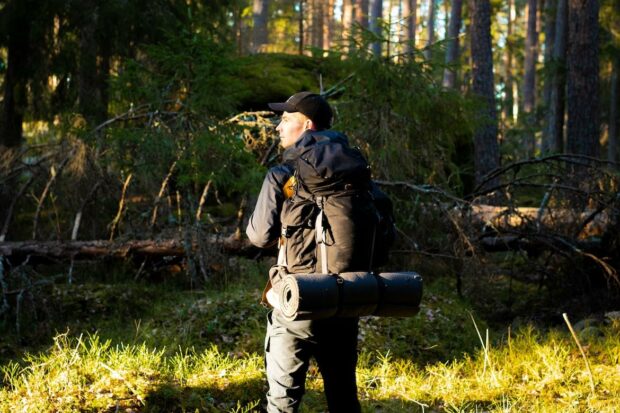Into the Wild: 7 Essential Tips for Thriving in Extreme Environments
The call of the wild is something most of us feel, but few have tasted. Whether it’s the allure of a distant mountain peak seen from the air or a rugged coastline calling to you from overseas, the draw of undiscovered worlds has never been greater. But if exploring extreme environments is your dream, preparing for and tackling these challenges can be daunting tasks.

That’s where we come in! Here are seven essential tips on how to make sure you’re prepared for anything mother nature throws at you so that your journey into the unknown is both safe and enjoyable. With knowledge gleaned from our own personal jaunts into some of Earth’s toughest terrains, let us guide you on this thrilling expedition!
Choose the right gear for the terrain and climate
Adventuring outdoors can be an exciting and fulfilling experience, but it’s important to make sure you have the right gear to match the terrain and climate you’ll be in. From the blistering sun of the Sahara to the icy tundra of Antarctica, every environment poses a unique set of challenges that require specialized equipment to overcome.
Be sure to research the topography and weather patterns of your destination, and invest in high-quality gear that will keep you safe and comfortable throughout your journey. Whether it’s a sturdy pair of hiking boots, a warm sleeping bag, or a waterproof jacket, the right gear can make all the difference.
Take extra precautions to protect yourself from extreme elements
Mother nature can be unpredictable and relentless when she’s on a roll. Whether you’re braving a scorching heatwave or a bone-chilling snowstorm, it’s important to take extra precautions to protect yourself from extreme elements. Staying hydrated keeping cool in extreme heat and making sure to bundle up and stay warm in extreme cold can make all the difference in your health and well-being.
For example, if you’re heading out on an icy journey, it’s a good idea to pack plenty of warm layers and wear appropriate clothing such as waterproof boots. When you’re on board the Greenland Explorer, make sure to have a supply of extra hats, scarves, and gloves. Properly equipped and with the right supplies on hand, you can survive even in the harshest of conditions.
Learn to identify edible and medicinal plants
Exploring the great outdoors can be an exhilarating experience, but it’s important to come prepared for any situation. Learning to identify edible and medicinal plants can be a lifesaver in case of an emergency.
From dandelions and wild strawberries to aloe vera and comfrey, there are a variety of plants that can provide sustenance and healing properties. By taking the time to study and practice identifying these plants, you’ll gain a new appreciation for the natural world and feel more confident facing unexpected situations while enjoying nature.
Research potential hazards
It’s crucial to research potential hazards before setting out. In the wilderness, you’re not just exploring an area – you’re entering an ecosystem teeming with wild animals, unpredictable terrain, and unpredictable weather conditions.

Some of these hazards, like venomous snakes or grizzly bears, might seem obvious. Yet others, such as unstable rock formations or flash floods, could catch you off guard.
Whether you’re planning a day hike, a camping trip, or an extended backpacking journey, it’s essential to educate yourself on the potential dangers of the area you’ll be visiting. With adequate research and preparation, you can stay safe and still enjoy all the wonders that nature has to offer.
Make sure your cell phone is charged and has service
Have you ever found yourself in the middle of nowhere with a dead cell phone? Or maybe you’re on a road trip and suddenly lose your signal. It’s a common issue when exploring remote areas, but there are steps you can take to ensure you stay connected. The first and most obvious step is to make sure your phone is fully charged before you head out.
You should also pack a portable charger just in case. Additionally, research the areas you’ll be visiting ahead of time to see which carriers have coverage in those areas. It may be worth switching to a carrier with better coverage if you frequently explore remote locations. Remember, communication is key, so don’t let a dead phone leave you stranded.
Familiarize yourself with navigation tools
Familiarizing yourself with navigation tools such as maps and compasses can be a game changer, especially in unfamiliar territories. These tools provide valuable information about where you are, where you’re heading, and how to get there. With a map in hand and a compass to guide you, you’ll be able to confidently navigate your way through even the most challenging environments
Know how to find safe drinking water and build a shelter
When it comes to survival skills, knowing how to find safe drinking water and build a shelter is crucial. In emergency situations, access to clean water is critical to maintaining our health and staying hydrated. But finding it can be a challenge. We need to know the signs of where water may be located and how to purify it if needed.
Similarly, when we find ourselves in a situation where we need to build shelter, knowing how to do it effectively can mean the difference between life and death. Whether it’s by using natural materials or making use of what we have with us, being able to protect ourselves from the elements is a crucial part of survival.
By following these tips, you can ensure a safe and enjoyable outdoor experience. With the right know-how and preparation, you are sure to make the most of your time outdoors and have the confidence to explore further. Make sure to familiarize yourself with the terrain and conditions of wherever you are going and proceed accordingly.
Always trust your instincts and don’t take any unnecessary risks. With a better understanding of how to best navigate the wilderness, both you and your environment will be more secure. There is nothing quite like the sense of accomplishment that comes from being well-prepared in unfamiliar territory. So what are you waiting for? Get out there and start adventuring!
